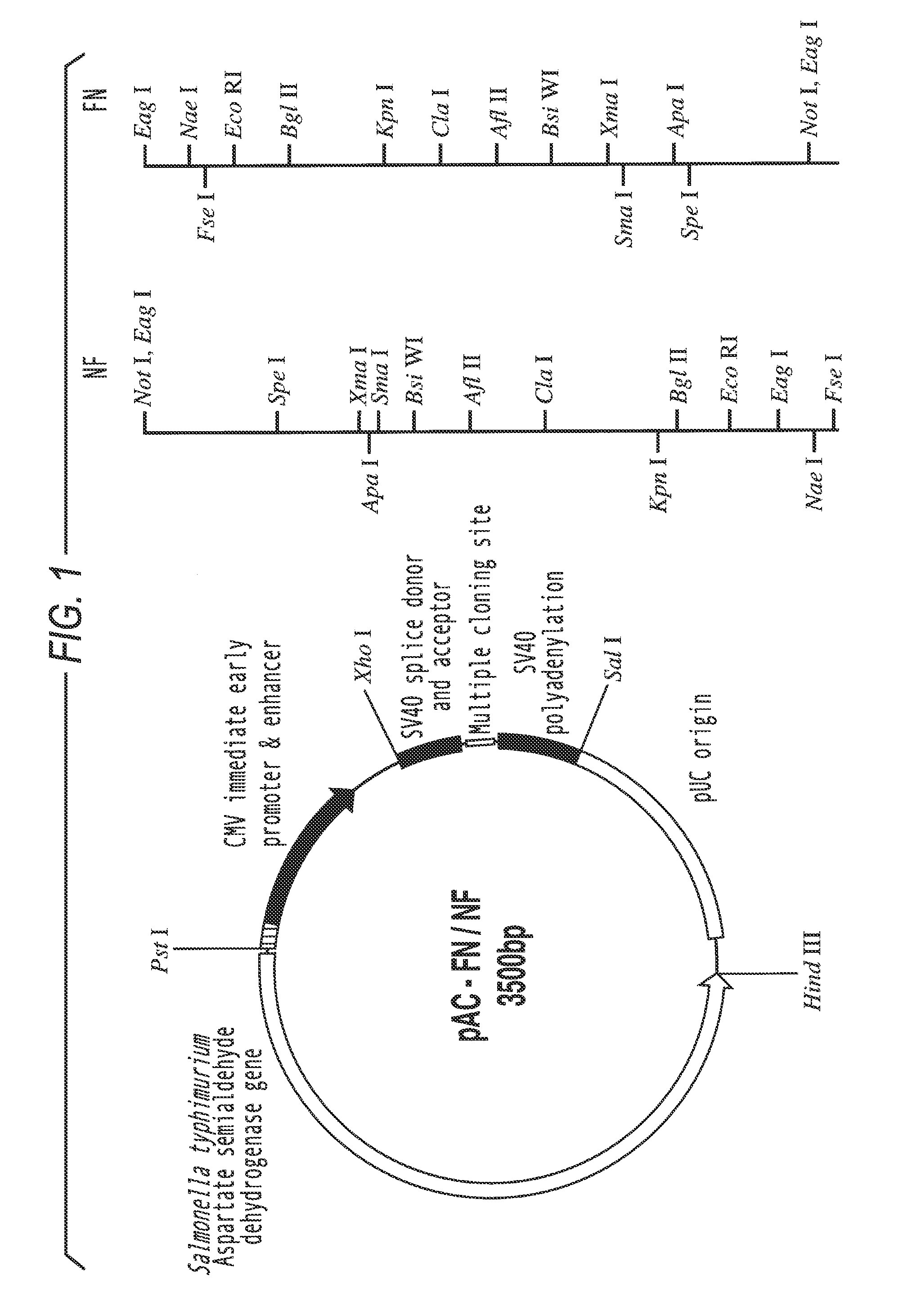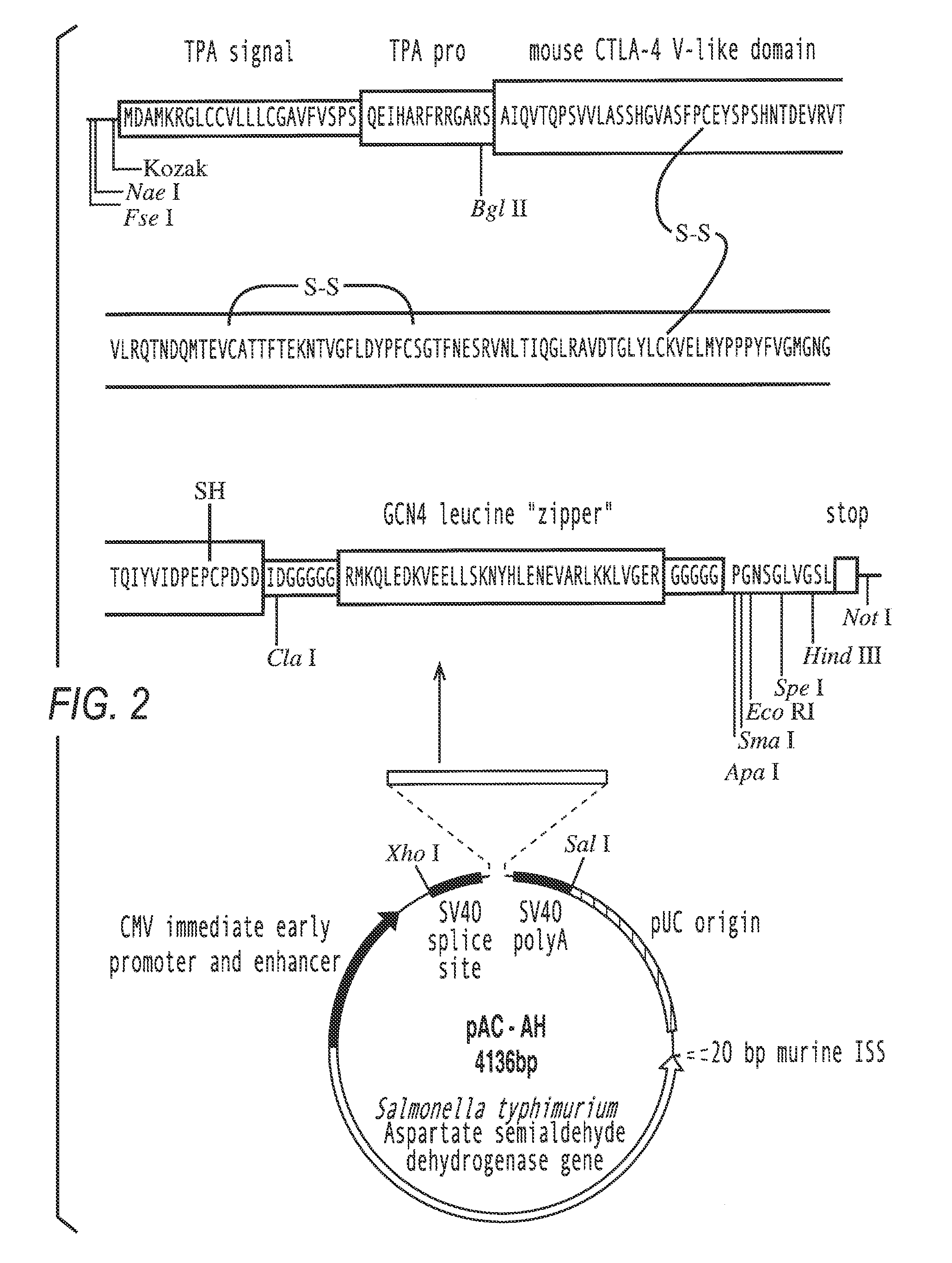Nucleic acid vectors for immunization
a nucleic acid and vector technology, applied in the field of vaccines, can solve the problems of incorrect folding, major practical and theoretical obstacles, and poor induction of cell-mediated immunity, and achieve the effects of improving the efficacy of a dna vaccine, reducing viral titres, and speeding up the immune respons
- Summary
- Abstract
- Description
- Claims
- Application Information
AI Technical Summary
Benefits of technology
Problems solved by technology
Method used
Image
Examples
Embodiment Construction
I) Construction of Pac-FN-NF
[0092]The mammalian reporter vector pCMVβ (Clontech, Palo Alto, Calif.) was digested with Not I to remove the β-galactosidase reporter gene. The linearized vector was purified from a 1% agarose gel using the Qiaex II gel extraction kit (Qiagen, Hilden, Germany) and religated with T4 DNA ligase, resulting in the vector pCMV-N. To introduce multiple cloning sites (MCS), oligonucleotides were generated using an ABI 394 DNA synthesizer (Perkin Elmer), using reagents from Cruachem (Glasgow), and purified following the manufacturer's instructions. Two oligomers of 71 nucleotides length (mcs1 and mcs2) (table 1) were annealed at equimolar conditions in T4 ligase buffer by heating to 70° C. for 5 minutes, slowly cooling down to 30° C., and a final chill on ice. The resulting double stranded MCS (MCS-FN / NF)) with 5′-GGCC-overhangs was inserted into the Not I site of Pcmv-N. the mcs1 oligomer was labeled with [γ-32P]-ATP by polynucleotide kinase (New England Biolab...
PUM
| Property | Measurement | Unit |
|---|---|---|
| nucleic acid | aaaaa | aaaaa |
| affinity chromatography | aaaaa | aaaaa |
| purity | aaaaa | aaaaa |
Abstract
Description
Claims
Application Information
 Login to View More
Login to View More - R&D
- Intellectual Property
- Life Sciences
- Materials
- Tech Scout
- Unparalleled Data Quality
- Higher Quality Content
- 60% Fewer Hallucinations
Browse by: Latest US Patents, China's latest patents, Technical Efficacy Thesaurus, Application Domain, Technology Topic, Popular Technical Reports.
© 2025 PatSnap. All rights reserved.Legal|Privacy policy|Modern Slavery Act Transparency Statement|Sitemap|About US| Contact US: help@patsnap.com


